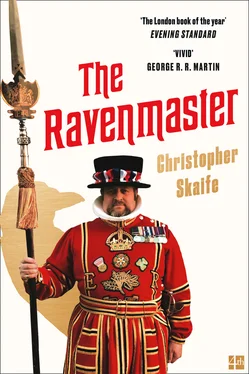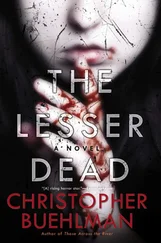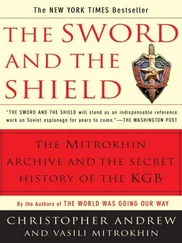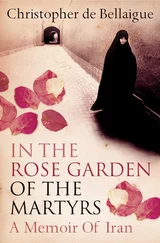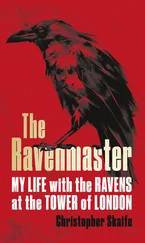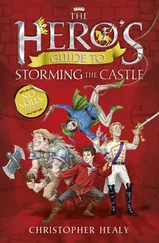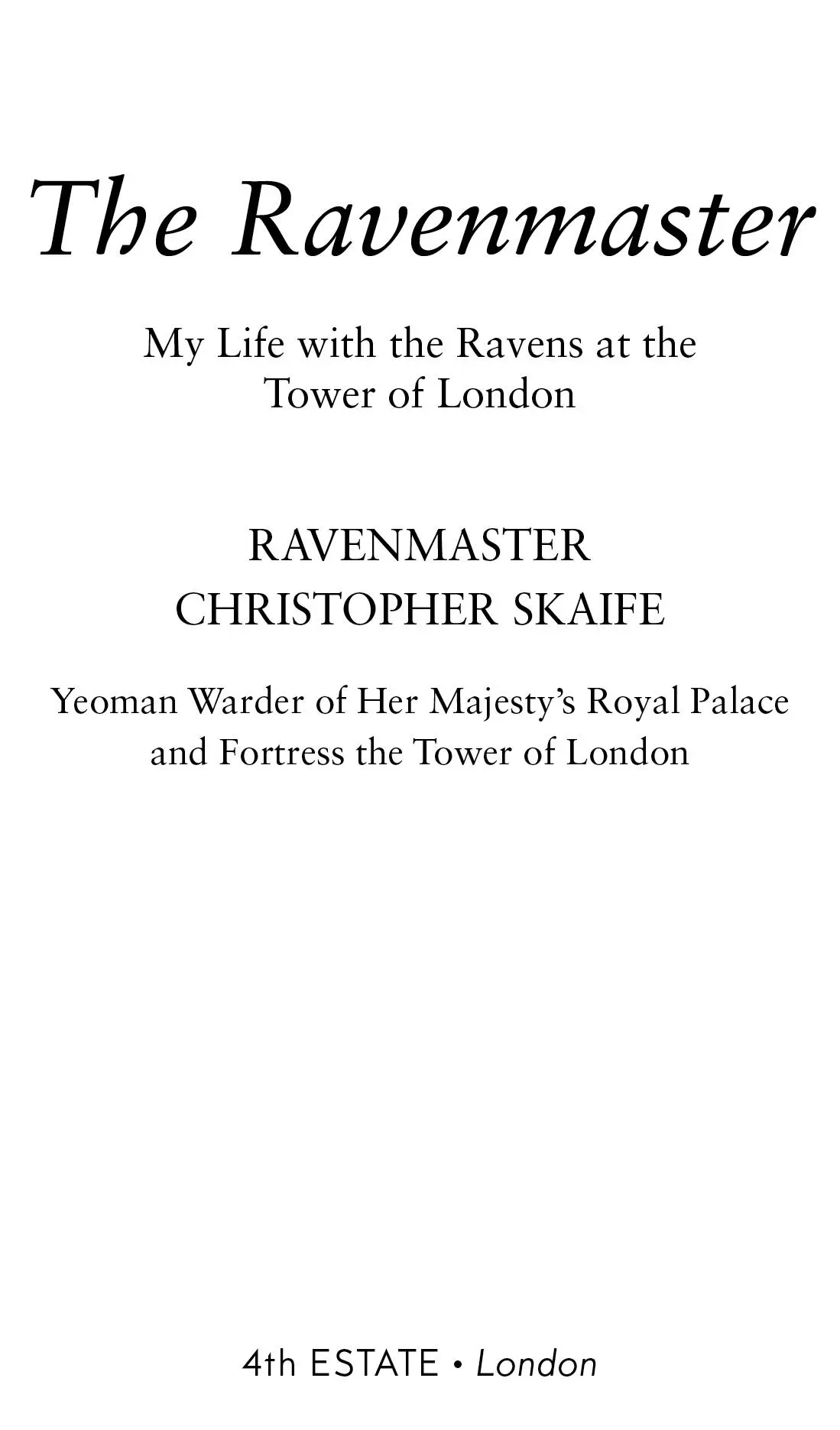
4th Estate
An imprint of HarperCollins Publishers
1 London Bridge Street
London SE1 9GF
www.4thEstate.co.uk
This Ebook first published in Great Britain by 4th Estate in 2018
Copyright © 2018 by Historic Royal Palaces Enterprises Ltd 2018
The right of Historic Royal Palaces Enterprises Ltd to be identified as the copyright-holder of this work has been asserted in accordance with the Copyright, Design and Patents Act 1988
Map © Richard Wells
A catalogue record of this book is available from the British Library
All rights reserved under International and Pan-American Copyright Conventions. By payment of the required fees, you have been granted the non-exclusive, non-transferable right to access and read the text of this e-book on screen. No part of this text may be reproduced, transmitted, down-loaded, decompiled, reverse engineered, or stored in or introduced into any information storage and retrieval system, in any form or by any means, whether electronic or mechanical, now known or hereinafter invented, without the express written permission of HarperCollins.
Source ISBN: 9780008307929
Ebook Edition © October 2018 ISBN: 9780008307905
Version: 2019-08-02
To the ravens of Her Majesty’s Royal Palace and Fortress the Tower of London
And to the memory of Martin Harris
Cover
Title Page
Copyright
Dedication
Map
1 Silhouette
2 Ravenmaster
3 The Rules
4 Roll Call
5 Bird Life
6 Tower Green
7 Biscuits and Blood
8 The Menagerie
9 Black Birds
10 The Raven Spreads His Wings
11 The Great Escape
12 Resistance to Interrogation
13 Citizens of the World
14 Double-Hatting
15 The Story
16 Application
17 Speaking in Ravenish
18 Bird Brains
19 Ravenology
20 The Legend of the Ravens at the Tower
21 Blood Swept Lands and Seas of Red
22 My Mistress’ Eyes Are Raven Black
23 Birds and Books
24 Death and the Raven
25 The Ghosts of My Life
26 And So to Bed
27 Great Traditions
28 Sentinels of the White Tower
29 Rising Above
Appendix: Ravenmasters Since 1946
Acknowledgements
Suggested Reading
About the Publisher
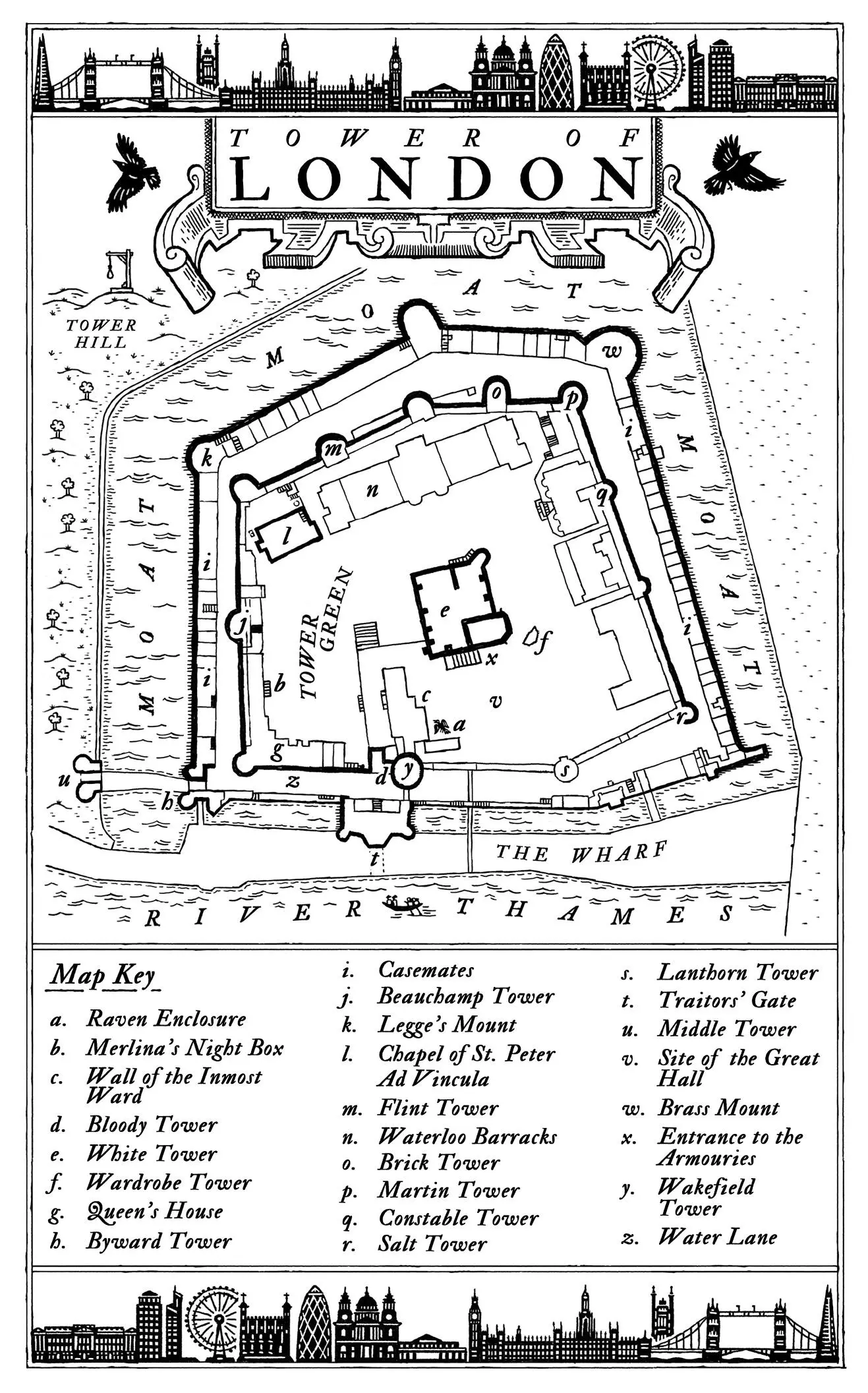
1
0530. Autumn. First light over London. I’m up and out of bed before the alarm. I get dressed in the dark and head straight out the door. No time even for a cup of tea. There’s always that niggling concern that something might have gone wrong overnight. And if things go wrong, things can go badly wrong.
I can already hear the lorries and the white vans and the early-morning commuters coming into town. Tower Bridge Road, Fenchurch Street, London Bridge. There’s that hum – the sound of the City awakening.
I hurry up the stone spiral staircase by the Flint Tower, the London skyline bright with lights and winking behind me. I see the old Port of London Authority Building, which is now home to a fancy hotel, but was once responsible for the comings and goings of ships all the way up and down the Thames. Behind that stand the Cheesegrater and the Walkie-Talkie and the Gherkin, the big new skyscrapers with their funny little nicknames.
Past the Chapel and the Waterloo Barracks and out onto Tower Green and there’s that proper morning smell of London, that mixture of exhaust fumes, the river, fresh-ground coffee, and the beautiful sweet incongruous smell of fresh-cut grass on Tower Green. Tower Bridge is hunched up ahead, with HMS Belfast reliably anchored on the river to the south.
There’s no one around in the Tower, just me and the shadows of a thousand years of history.
I call out, and at first there’s nothing but silence. I call out again. There’s always that moment of fear as I scan the skyline. But then I see her: perched on one of the rooftops of the Tower buildings, a silhouette against the blue-grey dawn.
‘Good morning,’ I say.
And a good morning it is.
The ravens are at home in the Tower.
I can breathe easy again – the kingdom is safe for another day.
2
I have what is often described as the oddest job in Britain.
Odd? Maybe.
The best? Definitely.
My name is Chris Skaife and I am the Ravenmaster at the Tower of London.
My official title is Yeoman Warder Christopher Skaife, of Her Majesty’s Royal Palace and Fortress the Tower of London, and member of the Sovereign’s Body Guard of the Yeoman Guard Extraordinary, which is generally believed to be the oldest formed ‘Body of Men’ in the world still in existence, dating back to the reign of King Henry VII sometime after the Battle of Bosworth Field in 1485. All of us Yeoman Warders are former soldiers, male and female, with at least twenty-two years of unblemished service. We are the ceremonial guardians of the Tower of London. In principle we’re responsible for looking after any prisoners at the Tower and safeguarding the Crown Jewels. In practice, we act as tour guides and as custodians of the rituals of the Tower. We live right here, in the Tower. They say that every man’s home is his castle: for us, it’s literally the case.
How can I begin to explain the Tower to you? It was built as a fortress and a Royal Palace, but it’s also been a prison, an arsenal, and the site of the Royal Mint and the Royal Armoury. One of the great early English historians, John Stow – who grew up about half a mile from the Tower – summed it up best in his Survey of London , published in 1598: ‘This Tower is a citadel to defend or command the city; a royal palace for assemblies or treaties; a prison of state for the most dangerous offenders; the only place of coinage for all England at this time; the armoury for warlike provision; the treasury of the ornaments and jewels of the crown; and general conserver of the most records of the king’s courts of justice at Westminster.’ That just about covers it. These days we welcome around three million visitors every year.
There are plenty of famous places for tourists and locals to visit in London. There’s Westminster Abbey, there are the Houses of Parliament, Buckingham Palace, Kensington Palace, Kew Gardens, Hampton Court Palace, the British Museum, the Imperial War Museums, the V & A, the Science Museum, the Natural History Museum. The list goes on and on. If you’re the sort of person who wants to see a nice Baroque interior then off you can go to a Hawksmoor church, or if you fancy a nice bit of post-war Brutalism there’s the Royal Festival Hall. If you’re looking for a good view you can go to Hampstead Heath or Primrose Hill, or up to the top of the Shard. You’ve got your theatres and your concert halls and your restaurants and cafés. But in my opinion – my humble opinion – the Tower remains without a doubt one of London’s great attractions.
Why? Well, there’s the obvious fact that we’re one of the first attractions. When William the Conqueror defeated King Harold at the Battle of Hastings back in 1066 he decided he needed a sign of his triumph, a monument to his great power and strength, and so sometime around the late 1070s work began on the White Tower, the biggest and boldest building ever undertaken in England. The Tower was intended as a symbol of power and remains so today: in my opinion the finest example of statement architecture in the country. London may be forever reinventing itself, but the Tower remains. Much of the old City was destroyed in the Great Fire of 1666. Since then, Newgate Prison has gone. Old London Bridge has gone. The great warehouses around St Katharine Docks have gone. Even during my time at the Tower, London has been transformed: the Shard, the Gherkin, the Walkie-Talkie; Crossrail; the Docklands Light Railway; the gentrification of the East End. Yet right in the middle of it all we still have the Tower. It has seen it all, done it all, been part of it all. It has incredible architecture. Pageantry. A bloody history of murder and torture. And – of course – it has the ravens.
Читать дальше
